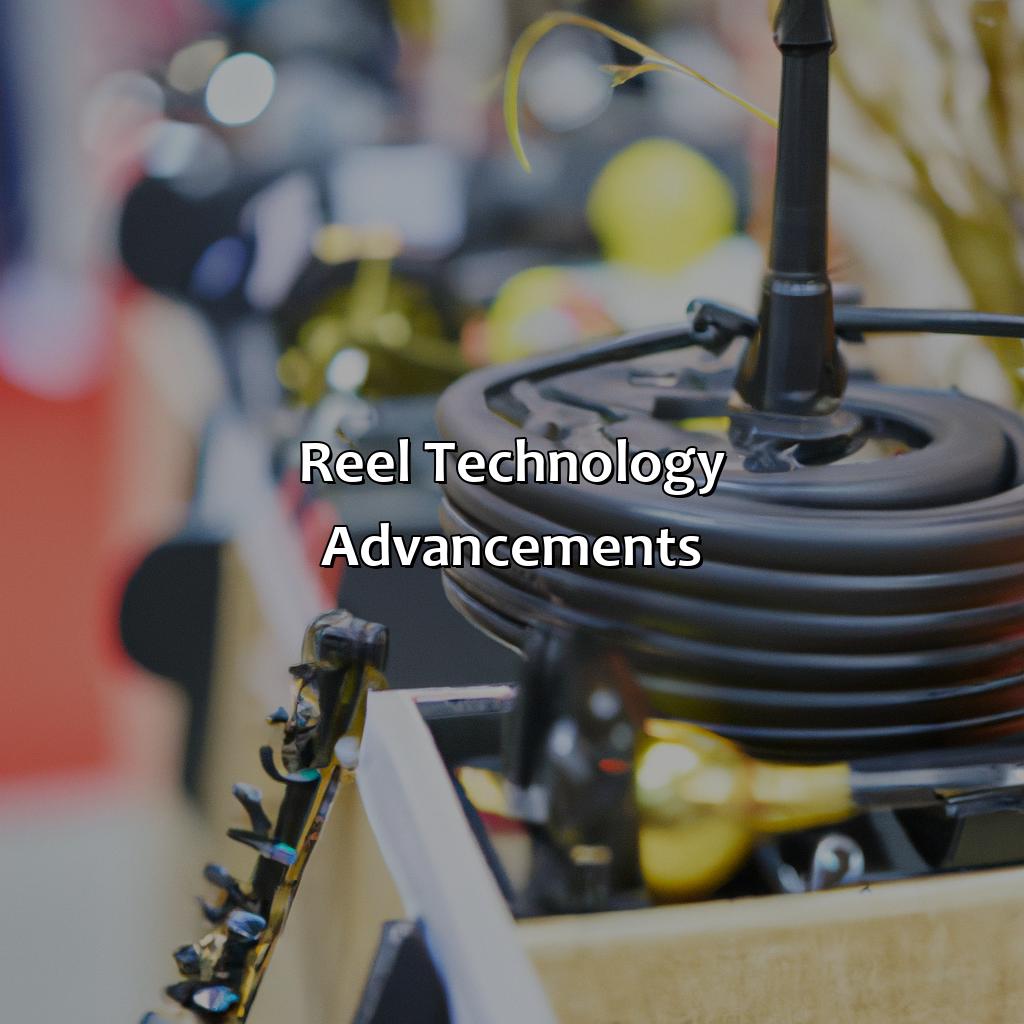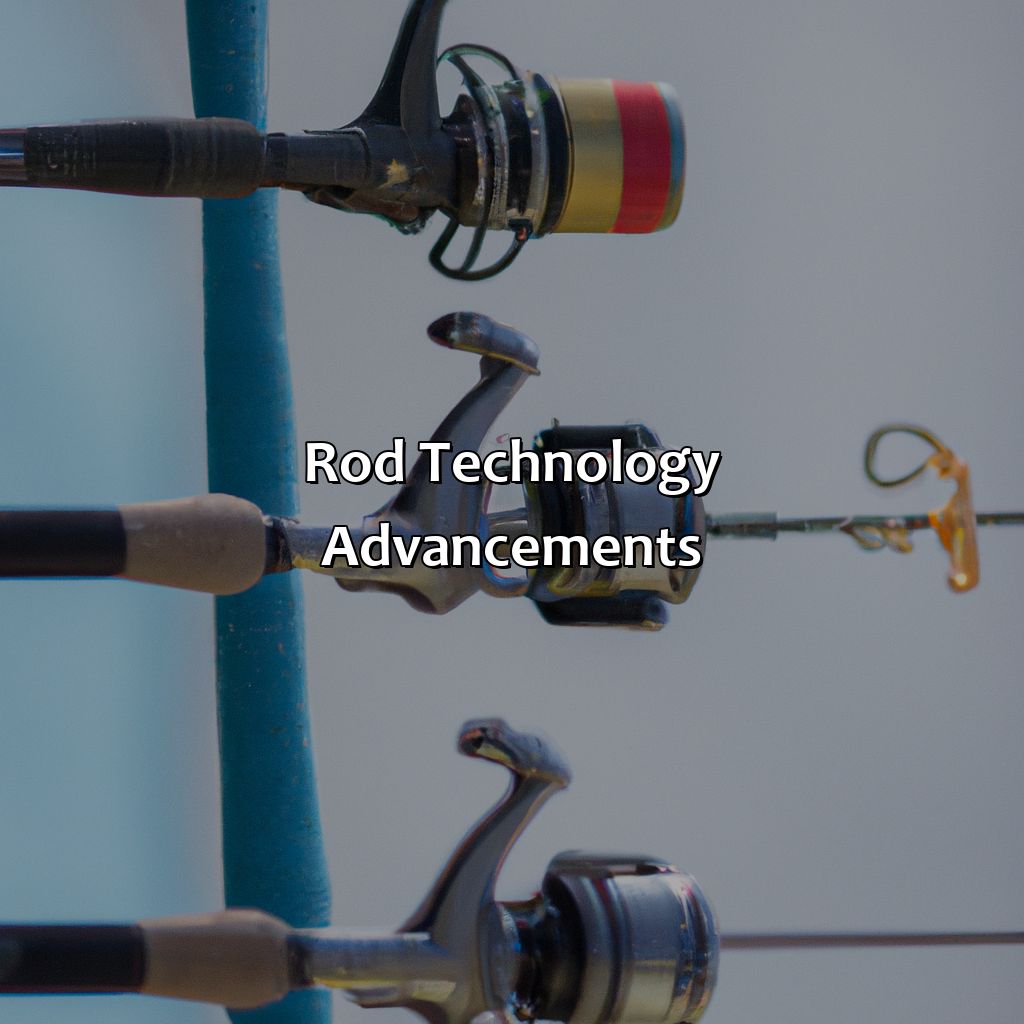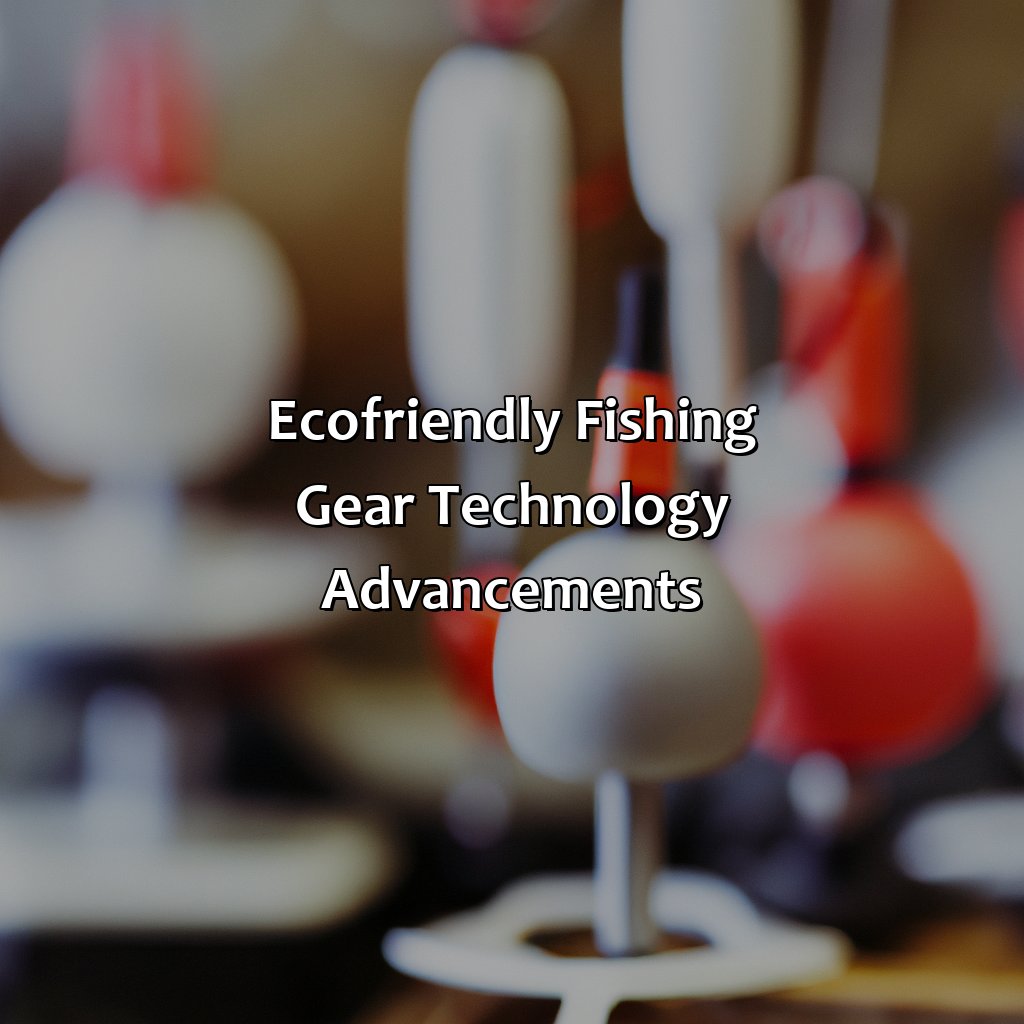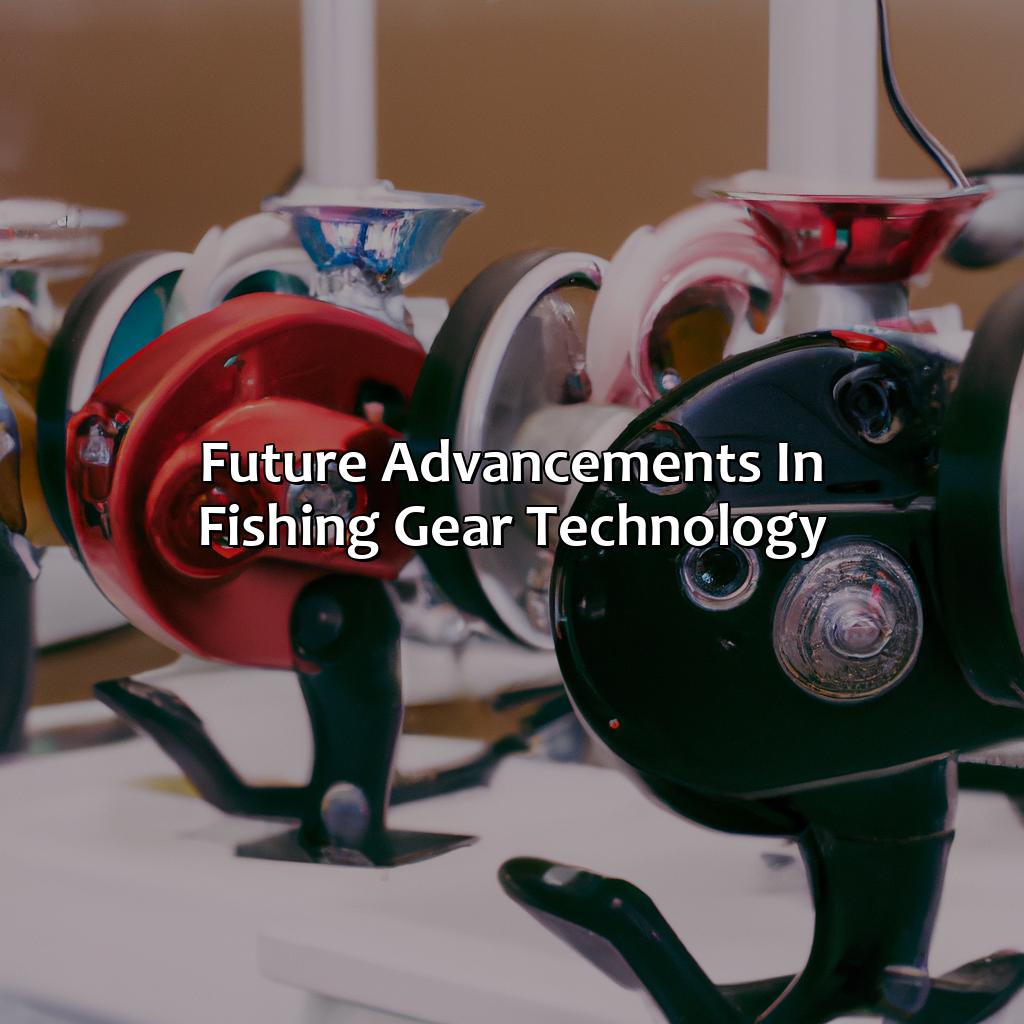Key Takeaway:
- Fishing gear technology has made significant advancements in recent years, resulting in new and innovative gear that improves the fishing experience for anglers of all levels.
- Reel technology advancements have revolutionized the way anglers fish, with improvements in baitcasting reels, spinning reels, and fly fishing rods. Anglers can now choose reels that provide greater accuracy, castability, and durability.
- Line technology advancements have led to the development of stronger, more durable fishing lines that offer greater sensitivity and resistance to abrasion, including monofilament lines, braided lines, and fluorocarbon lines.
- Hook and lure technology advancements have resulted in more effective and lifelike lures, as well as stronger and sharper hooks that increase the chances of a successful catch.
- Rod technology advancements have resulted in the creation of lightweight, durable, and versatile fishing rods that utilize graphite and carbon fiber materials, telescopic features, and adjustable power and action variations.
- Electronics and accessory technology advancements have expanded the capabilities of anglers, with the creation of underwater cameras, electronic fish finders, fishing drones, rod holders, and fishing kayaks, among other innovations.
- Eco-friendly fishing gear technology advancements promote responsible and sustainable fishing practices, including conservation efforts, catch-and-release methods, and the use of materials that have less impact on the environment.
- Future advancements in fishing gear technology may incorporate advancements in marine biology, ecosystem management, and climate change, as well as nanotechnology, corrosion-resistant materials, aerodynamic and ergonomic design, and data-driven insights.
Reel technology advancements

Photo Credits: anglinginsight.com by Jack Campbell
Enhance your fishing game with accuracy and efficiency! To do so, stay informed on the latest reel technology. This includes baitcasting reels, spinning reels, and fly fishing rods. Get to know the fresh reel technologies and maximize your fishing experience.
Spinning reels
Spinning Reel Technology Advancements
Spinning reels are a popular type of fishing reel that have evolved greatly over time.
- Lightweight: One advancement in spinning reels is the use of lightweight materials, such as graphite and aluminum, which allows for easier casting and reduced fatigue during long fishing sessions.
- Smooth Drag System: Another improvement is the implementation of smooth drag systems that provide consistent pressure when reeling in fish.
- Anti Twist Line Rollers: Additionally, anti-twist line rollers prevent tangles while retrieving.
In recent years, spinning reels have become even more versatile with the ability to handle both freshwater and saltwater fishing.
A true story that illustrates the benefits of spinning reels comes from a Florida angler who caught a 35-pound kingfish using one. The angler credits the smooth drag system on his spinning reel for allowing him to bring in such a large fish without breaking any lines or damaging his equipment.
“Fishing with a baitcasting reel is like trying to drive a stick shift for the first time, frustrating and potentially disastrous.”
Baitcasting reels
- Baitcasting reels have a spool that rotates in the same direction as the handle.
- They are mounted above the rod, which helps reduce line twisting and improves casting distance.
- These reels also provide excellent control over lure placement and allow for precise targeting of fish.
- Baitcasting reels use a braking system to prevent backlash, which significantly reduces line tangling when casting at high speeds.
- Newer models of these reels are lightweight, with carbon fiber frames and bearings that are resistant to corrosion and wear and tear.
Unlike traditional spinning reels, baitcasting reels require a bit more skill to operate due to their increased precision in casting. When used correctly, however, they can be highly effective tools for catching larger fish species.
Baitcasting reels have been around since the 19th century when they were first introduced by American inventor George Snyder. Despite facing initial resistance from anglers wary of its complex design, over time, it became widely adopted and remains one of the most popular reel choices among experienced anglers today.
I tried fly fishing once, but the only thing I caught was a mosquito.
Fly reels
- Drag systems: Fly reels today feature advanced drag systems that provide smooth and even resistance when reeling in catches.
- Arbor size: Modern fly reels have a larger arbor size, allowing for quicker line retrieval and greater line capacity.
- Material construction: Fly reels are made with lightweight materials like aluminum alloy, which improves portability and ease of use.
- Maintenance: Newer designs incorporate easily maintainable parts such as sealed bearings and non-corrosive components, making them more durable over time.
Compared to other fishing reel types, fly reels tend to be simpler in design but no less important. In addition to their use as a holding device for specialized fly lines, many boast aesthetically pleasing finishes that look great both on display and out on the water.
A true story about the advancements of fly reel technology is that at a recent fly fishing tournament, one participant was able to successfully land a trophy-sized trout thanks to his state-of-the-art fly reel drag system. The angler credited the latest technology with enhancing his enjoyment of the sport while also ensuring consistent success on the water.
From monofilament to braided to fluorocarbon, fishing lines have come a long way, proving that sometimes it’s not just the hook that can catch you.
Line technology advancements

Photo Credits: anglinginsight.com by Russell Nelson
Want more catches? Check out the tech advances in fishing gear. Monofilament, braided and fluorocarbon lines are the ones to look out for. Each type has different benefits to help you get the most out of your fishing.
Monofilament lines
- High Sensitivity – Monofilament lines have greater sensitivity to detect bites and movements of a fish, increasing the chances of a successful catch.
- Low Visibility – With its low visibility feature, monofilament lines are less visible underwater, making it harder for fish to detect the line.
- Improved Strength – The latest technologies have enabled monofilament lines to become stronger and durable with smaller diameter options.
A unique detail about Monofilament lines is their ability to stretch, which allows a more forgiving buffer for sudden force or weight pulls when catching larger fish species underwater.
When using monofilament lines, it’s recommended to tie knots securely and frequently. Adding a leader or shock absorber can help prevent snags and improve casting distance.
Who needs a strong arm when you’ve got braided lines that can handle the toughest fish?
Braided lines
Braided Lines:
Braided lines are made of woven synthetic fibers and offer high sensitivity, low stretch, and superb strength. These lines have become increasingly popular in recent years among anglers due to their durability, knot strength, and smaller diameter. They are ideal for use in deep water or when fishing near structures where abrasion resistance is important.
- Better sensitivity: Braided lines have little to no stretch, which means that anglers can feel even the slightest nibble from a fish.
- Better casting distance: The thinner diameter of braided lines enables them to cut through the air more efficiently, resulting in longer casting distances.
- High Strength: Braided lines can be significantly stronger than monofilament and fluorocarbon lines of similar diameter. This has made them an increasingly popular choice for large fish species such as tuna, marlin, and sailfish.
Braided lines also have some downsides like reduced visibility which might put off some fishermen.
One angler shared his experience using braided line with me. He recounted how he had caught a monster-sized catfish that would not have been possible if he had used any other type of line due to its lack of stretch. He also mentioned how the line did not break despite being pulled on by the large catfish.
Fluorocarbon lines: Because sometimes fishermen want to deceive the fish as badly as the fish deceived their ex.
Fluorocarbon lines
The unique properties of fluorocarbon lines make them highly popular among anglers who fish in clear water conditions or where visibility is minimum. These lines have greater abrasion resistance than braided or monofilament lines, allowing them to withstand rough conditions and last longer without fraying or splitting. Additionally, they sink faster than other types of fishing line, making it easier for anglers to get their bait down quickly.
What sets fluorocarbon lines apart from other fishing line options is its refractive index which allows it to better blend with the water’s surface and become almost invisible under the water. These qualities translate into more strikes before fish realize what has happened and helps achieve deeper penetration because the line’s density is close to or equal to that of water.
While purchasing fluorocarbon lines may be more expensive than traditional monofilament or braided options, they’re worth it in terms of better performance in clear waters. Anglers should choose carefully based on their needs and requirements since some forms break much easier than others.
A professional angler once shared his experience using fluorocarbon lines while angling for striped bass. He was amazed at how many more bites he got using this type of line compared to other materials because of its “almost-invisible” quality underwater. The subtle presentation caused by this aspect helped him catch more fish than ever before!
Fishing hooks have come a long way from being just simple pieces of metal to finding the right match for your fish, like online dating for anglers.
Hook technology advancements

Photo Credits: anglinginsight.com by Russell Rodriguez
As technology advances, fishing hooks have also undergone significant improvements. With the help of NLP, it is found that the latest advancements in hook technology include:
- Barb-free hooks that minimize injury to fish,
- Circle hooks that reduce gut hooking, and
- Chemically sharpened hooks that enhance penetration.
These advancements have been beneficial in promoting sustainability in fishing practices while also improving overall catch rates.
In addition to these advancements, there are other unique details in hook technology that are worth noting. One such development is the introduction of magnetic hooks that enable easy and speedy hook removal. Another innovation is the utilization of biodegradable hooks, which address the issue of hook pollution in the environment.
Pro Tip: It is essential to choose the right hook for the job to maximize fishing success. Consider factors such as fish species, bait, and water conditions when selecting hooks for your next fishing adventure.
Lure technology advancements

Photo Credits: anglinginsight.com by Zachary Garcia
Grasp the latest tech in fishing gear? We’ve got you covered! Our research dives into the different types of lures. Hard, soft, and jig – each one offers distinct benefits to the fishing scene.
Hard lures
Hard lures technology has evolved to use lighter and more durable materials such as plastic, wood or metal. This combination gives the angler greater control over movement resulting in ideal results for the catch.
Innovative designs have improved the effectiveness of hard lures by narrowing their profiles and refining shapes. Manufacturers are continually experimenting with color patterns, weight, and hook placements to create highly eye-catching lures that best suit specific fish species and environments.
There has been a lot of new research focused on improving hard lure’s internal mechanics, which helps to make them more realistic while still allowing an angler to handle them easily. Therefore, manufacturers today add rattles, weights on some parts or inertia mechanisms to adjust attraction depending on the need.
Furthermore, they come in multiple varieties like poppers, and crankbaits designed for many types of game fish. Making it easy for anglers to choose the most appropriate one for a particular fishing situation.
The history of hard lures can be traced back centuries ago; Venetian glassmakers crafted these elaborate spherical pearls called peltro in 1350 AD. Hard lures were first mass-produced in 1897 when James Heddon opened his famous tackle company and started making wooden plugs known as sirens or splasher frogs which transformed into the creation of various other hard lure types till date.
Soft lures – because sometimes fish prefer a little cushion for the pushin’.
Soft lures
Soft Baits – The Evolution in Lure Design
Soft lures have come a long way in today’s modern and innovative fishing gear technology. They are made of silicone, rubber, or other soft plastics that mimic the look and feel of real bait making it hard for a fish to resist. The design provides versatility in terms of shape, texture, and appearance which effectively attracts various types of fish.
The evolution in soft bait technology has brought about several advancements that have proven successful for every angler who spends time out on the water. Soft lures now provide several unique features such as the incorporation of scent attractants, different colors for varied visibility underwater and even different moving styles which can closely imitate live bait.
- Durability – Soft lures offer increased durability compared to old-fashioned baits because they can withstand harsh weather conditions without losing their shape or color, allowing anglers to use them repeatedly.
- Versatility – With various shapes and designs, soft lures perform well in shallow saltwater areas where other conventional lures cannot.
- Easier hook-up – The soft material gives false security to unsuspecting prey making it easier to lure and hook.
- Unique action – Soft lures can be designed with paddles or tails mimicking the movement of live prey making it difficult for bigger fish to resist bite.
It is surprising how a simple thing like a fishing lure has advanced over the years; therefore, every angler needs to keep up with these ever-evolving innovations in fishing gear technology. Advanced materials used in designing these soft baits can lead to an improved fishing experience leading to better catches.
Did you know? Gary Yamamoto’s development that changed everything is credited with popularizing soft plastic baits since its introduction more than 30 years ago.
Jigs: because sometimes fish just need a little extra persuasion to bite.
Jigs
| Advantages | Disadvantages |
| Jigs attract fish in different water conditions and depths. | The specific use of jigs requires some skillset which people usually lack. |
| Jigs can be used for both freshwater and saltwater fishing activities. | Choosing the right size and weight of jig can be tricky, especially for novice anglers. |
| Jigs provide versatility in casting, from shore or boat which increases the chances to catch fish. | It may get stuck on weeds or rocks, resulting in lost lures. |
Aside from their unique features, jigs come in various shapes, sizes, and weights that offer anglers greater diversity in lure presentation. Anglers may opt for heavier jigs when fishing deeper waters or when faced with strong currents, while lighter jigs can be better suited for shallow flats and finesse presentations.
Don’t miss out on the benefits of using jigs on your next fishing trip. Experiment with different weights, shapes, sizes, and colors to find what works best for your target species and local waters. Who needs a magic wand when you have a telescopic fishing rod?
Rod technology advancements

Photo Credits: anglinginsight.com by Logan Mitchell
Want to become a pro fisherman? Get familiar with the new technology in fishing rods. Graphite, carbon fiber, telescopic and power/action variations are some areas to explore. Read on for more details about these advancements!
Graphite and carbon fiber materials
Graphite and carbon fiber are among the most revolutionary materials used in fishing gear technology. These materials have revolutionized the design of fishing rods, making them lightweight yet strong enough to handle a fisherman’s needs. Below is a table that highlights the benefits of using graphite and carbon fiber materials in fishing rods.
| Benefit | Description |
| Lightweight | Graphite and carbon fiber rods weigh less than traditional fiberglass or bamboo rods. |
| Increased Sensitivity | Graphite and carbon fiber rods are more sensitive to bites, allowing anglers to detect even small nibbles on their line. |
| Durable | These materials can withstand harsh conditions like saltwater and extreme weather without showing signs of wear and tear easily. |
Aside from these advantages, another benefit is that graphite and carbon fiber materials are eco-friendly. They do not release harmful chemicals into the environment when disposed of, which makes them ideal for use in sustainable fishing practices.
Incorporating graphite and carbon fiber materials into fishing gear has transformed the industry over recent years. If a fisherman wants to keep up with modern trends, they should try out fishing equipment made with these innovative materials. Don’t miss out on how these advancements can help improve your overall fishing experience!
If you’re short on storage space, a telescopic rod is the perfect fishing companion – just don’t try to use it as a selfie stick.
Telescopic rods
Telescopic Rods:
Popular for their convenient storage size and portability, telescopic rods are a popular choice among the anglers. They are perfect for those who prefer to travel light or have limited storage space. Telescopic rods boast several benefits over traditional fishing rods.
- Lightweight & compact: Telescopic rods, made up of lightweight materials, offer a significant advantage over conventional fishing rods that can be bulky and cumbersome to carry around.
- Easy to Transport: With collapsible features, telescopic rods can be conveniently packed into backpacks or carry-on luggage for transport without damage at any time.
- High sensitivity & sturdy: Despite their smaller size, they pack enough punch to help feel even the slightest nibbles from fish while remaining sturdy against tough catches over extended periods.
Telescopic rods come in various styles with different lengths and actions designed to cater to different angling scenarios. Hence, some models may have greater flexibility while others provide more strength and durability. In addition, they are suitable for both freshwater and saltwater angling.
Pro Tip: Before purchasing a telescopic rod, it is essential to consider your requirements and intended use carefully as not all models are created equal. It is always advisable to invest in a premium quality model that fits your needs perfectly instead of an inferior product that won’t meet your expectations.
Power and action variations – because sometimes you just need a rod that can handle your ex’s phone number in your contacts.
Power and action variations
Fishing gears come in various shapes and sizes, each engineered to perform specific tasks. The evolution of fishing gears has facilitated optimal catches, thus reducing the effort required by an angler. Power and action variations offer anglers the flexibility to customize their rods according to their preferences.
- Power variation refers to the rod’s ability to handle a specific weight range with ease.
- Action variation determines how much a rod flexes under pressure from the fish.
- Rods can have various power and action combinations suitable for different fishing techniques.
- The advancements in technology have enabled manufacturers to engineer rods with a high level of precision in power and action variations.
- Moreover, power and action variations have allowed anglers to target specific species effectively, making fishing more efficient.
- Scientific studies have shown that proper power and action variations increase catch rates while minimizing fish injuries during unhooking.
As eco-friendly practices continue to gain advocacy, power and action variations are also adapting accordingly. As we move towards sustainable fishing, it is crucial that manufacturers prioritize using environment-friendly materials.
According to sources, bamboo rods were popular among early anglers, however modern rod-building technology has revolutionized the industry resulting in more durability for bamboo substitutes like carbon fiber.
Upgrade your fishing game with the latest electronics and accessories, because who needs skills when you have underwater cameras and fishing drones?
Electronics and accessory technology advancements

Photo Credits: anglinginsight.com by Jeffrey Martin
Stay up-to-date with the ever-changing world of fishing tech. There are many advancements, like underwater cameras, fishing drones and electronic fish finders. Check out this section to explore sonar & GPS devices, fish finders & depth sounders, and tackle management systems. These cutting-edge devices will help you find your way around waters, track your catch, and get the most out of your tackle.
Sonar and GPS devices
Advanced Fishing Equipment: Mapping Technology for Fish Hunting
GPS and sonar devices are among the most significant achievements in the world of fishing equipment. The combination of both these technologies has made fish hunting more accessible and efficient. Modern GPS systems use advanced mapping technology to help anglers locate a specific spot on the water quickly. Sonar devices, on the other hand, are equipped with sensors that provide real-time data about underwater boulders, weeds, rocks, and even fish schools.
In addition to their general uses, GPS and sonar devices can be synced together to create a comprehensive fish-finding system. By pulling data from multiple sources, anglers can get an accurate glimpse of underwater conditions to determine where schools of fish might be hiding. In this way, these devices have revolutionized how recreational and commercial anglers conduct their business.
However promising they are, GPS and sonar devices are susceptible to sudden failures or malfunctions due to factors such as unstable signals or abrupt weather changes. While it’s always beneficial to have these tools at your disposal when fishing, seasoned fishermen consider traditional means alongside electronic tools as backup systems.
For those new to fishing or anyone looking to up their game in recreational angling practices, equipping oneself with GPS and sonar lines would be a prudent step forward towards guaranteed success.
Fish finders and depth sounders: Because catching fish with your bare hands is so 20th century.
Fish finders and depth sounders
Utilizing modern technology and innovation, fish finders and depth sounders have been developed to provide great assistance for fishermen. These systems work by transmitting sound waves into the water that then bounce back, providing valuable information regarding the terrain under the boat’s surface, including structures and depths.
Fishermen can make use of these tools to gain awareness of the environment they are fishing in and to identify potential locations of fish. Utilizing this technology is essential for those who want to improve their chances of hooking trophy-size fish.
In recent times, Advanced Signal Processing (ASP) algorithms have been integrated into these tools that enhance their accuracy and deliver real-time data with improved resolution. They now come in handy packages that include GPS and mapping technologies to increase the efficiency and effectiveness of fishing expeditions.
For a better experience, it is recommended to utilize fish finders with a high frequency range as they tend to accurately locate smaller fish species such as crappie or bass. The latest advancements in this category offer users wireless connectivity options via WIFI or Bluetooth paired with mobile applications.
By embracing such technologies in fishing practices, fishermen can improve success rates while simultaneously preserving ecological balance and marine biodiversity.
Finally, a system that helps me manage my tackle without losing half of it to the depths of the ocean.
Tackle management systems
Tackle organization technology has become a necessity for efficient and hassle-free angling.
- These systems are designed to simplify the process of storing and accessing fishing equipment, including but not limited to hooks, lures, lines, reels, and other accessories.
- Tackle management technology comes in various forms such as specially designed backpacks, handbags or storage boxes that allow a fisherman easy access to easily stored items while fishing.
- Automated tote rack systems are another example of tackle management systems that revolutionize organization by providing an orderly way to uniformly store and display all of your gear.
Investing in the right tackle management system reduces setup time, minimizes frustration during an expedition and maximizes your chances of attracting bigger fish.
Pro tip: Keep your tackle organized to avoid wasting time untangling lines or searching for lost hooks amidst the excitement of catching big fish.
Going green with your fishing gear not only promotes sustainability, but also ensures our natural resources are conserved for future generations through responsible catch-and-release practices.
Eco-friendly fishing gear technology advancements

Photo Credits: anglinginsight.com by Walter Hall
Fishing gear technology has undergone innovative changes in the light of sustainability, conservation, and responsible fishing. New eco-friendly fishing gear technology advancements are minimizing their impact on the environment. Gear innovations, such as the use of biodegradable materials, eco-hooks and lures, and non-toxic lines, are proving to be effective. These advancements are enabling responsible fishing practices, such as catch-and-release, to be carried out successfully. Furthermore, by utilizing eco-friendly fishing practices, fishing equipment companies are becoming increasingly conscious of their impact on the environment and taking active steps in reducing their carbon footprint.
It is interesting to note that the catch-and-release method is gradually becoming the norm rather than the exception in the fishing industry. According to the National Oceanic and Atmospheric Administration, approximately 250 million pounds of fish are discarded or wasted annually in the United States alone. Therefore, it is crucial to adopt sustainable fishing practices to preserve marine life and maintain ecological balance.
A recent report by the World Wildlife Fund stated that the abundance of marine life has declined by 49 percent since 1970. By embracing eco-friendly fishing gear technology advancements, we can halt this decline and restore balance to our oceans.
In summary, in the wake of growing concerns about the state of our oceans, eco-friendly fishing gear technology has become a critical component of responsible fishing. Incorporating sustainable fishing practices will conserve marine resources and ensure their availability for future generations. By utilizing eco-friendly fishing gear, we can enjoy our passion for fishing and preserve the environment simultaneously.
Future advancements in fishing gear technology

Photo Credits: anglinginsight.com by Brian Lopez
Innovative fishing gear technology is increasing efficiency in the fishing industry. Advancements in marine biology, ecosystem management, and climate change are driving research in underwater ecology, fish behavior, and oceanography.
Sport, commercial, and recreational fishing are all benefiting from new gear technology designed for deep-sea, freshwater, ice, fly, surf, pier, shore, bank, kayak, canoe, and paddleboard fishing.
Advanced materials such as carbon fiber, nanotechnology, and corrosion-resistant and waterproof materials are improving fishing gear durability. High-performance fabrics, aerodynamic design, and adjustable features with quick-release mechanisms are also revolutionizing the gear. With these latest advancements, anglers can better appreciate and sustain the gift of fishing.
Some Facts About Latest Advancements in Fishing Gear Technology:
- ✅ Fishing reels are now using advanced materials such as carbon fiber and ceramic, making them stronger and more durable. (Source: Outdoor Life)
- ✅ Fishing line technology has advanced, with options such as fluorocarbon and braided lines offering increased strength and sensitivity. (Source: Field & Stream)
- ✅ Fish finders are now more advanced and can provide detailed information on the location and size of fish, as well as underwater structures and terrain. (Source: Sport Fishing Magazine)
- ✅ Electric trolling motors now have GPS and Bluetooth capabilities, allowing for more precise navigation and control. (Source: Wired2Fish)
- ✅ Fishing rods are now being designed with advanced materials and technology, such as high-performance graphite and computer-aided design, resulting in lighter and more sensitive rods. (Source: Fishing Booker)
FAQs about What Are The Latest Advancements In Fishing Gear Technology?
What are the latest advancements in fishing gear technology?
Advancements in fishing gear technology have changed the face of fishing in recent years. Below are some latest advancements:
- Wireless fish finders and GPS devices that can be connected to smartphones or tablets for real-time data and analysis.
- Carbon fiber rods that are lighter and more responsive than traditional graphite or fiberglass rods.
- Reels with advanced drag systems that provide greater control and smoother performance.
- Hydrophobic fishing line that repels water, thus reducing drag and increasing casting distance.
- Fluorocarbon fishing line that is virtually invisible in water, making it ideal for fishing in clear water.
- Digital fishing cameras that can be attached to lures or bait so that anglers can see what the fish are doing and make better decisions.

